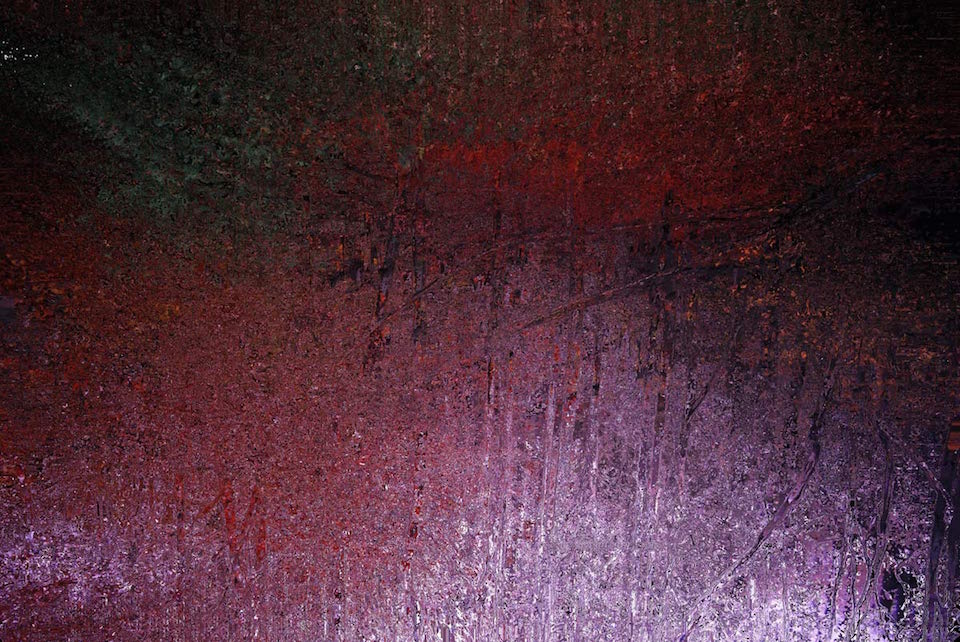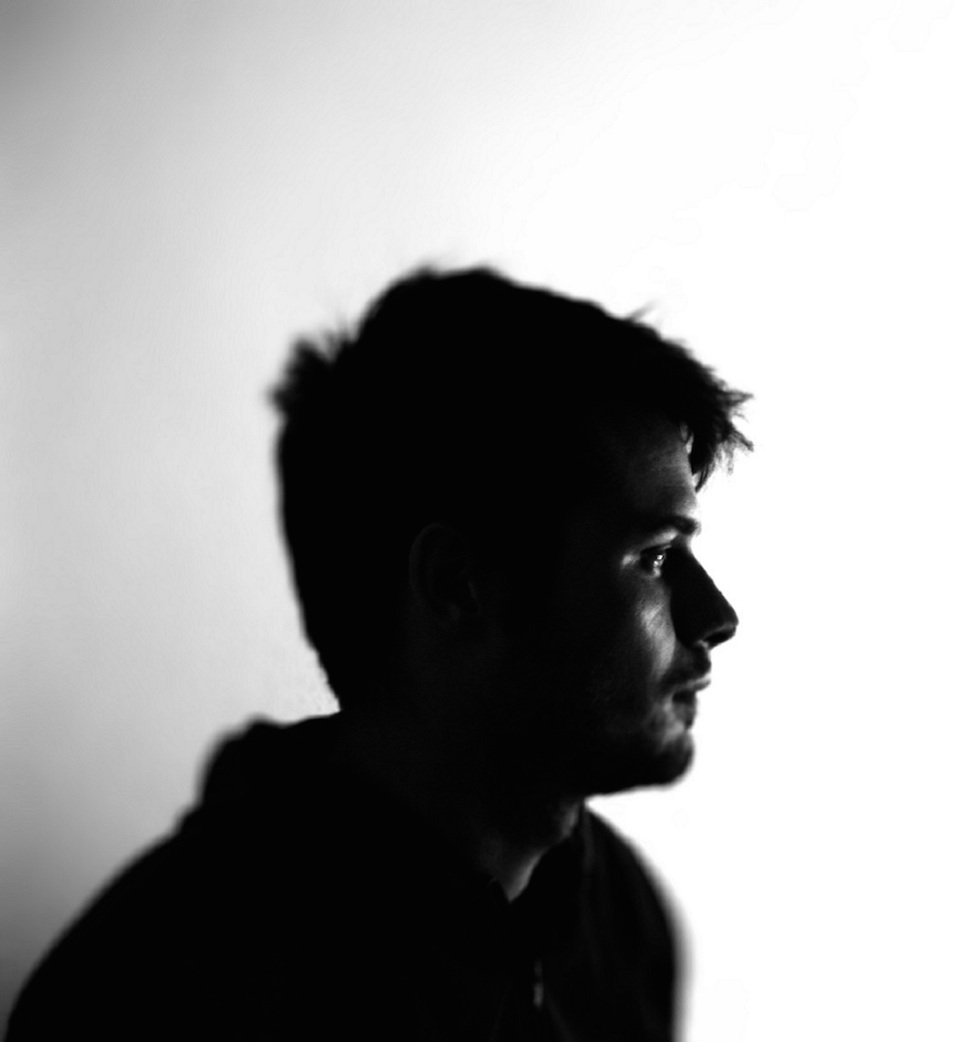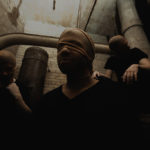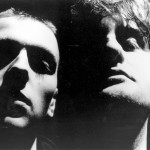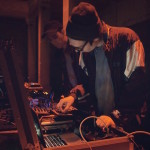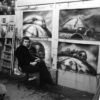Anyone who’s ever viewed experimental dance music as nothing but binary-coded clicks + cuts needs to read the following Rob Clouth feature. An in-depth look at the audiovisual world behind his new EP Hidden Structures (available tomorrow on Leisure System), it’s a reminder of just how intelligent IDM could be in its Warp-centric heyday.
“As I’m writing this,” Clouth explained via email, “I’ve noticed that when describing the tracks, it seems a bit cold and clinical. As though each track is like a carefully assembled machine, made with little or no emotion. They are made with emotion but not necessarily in a way that I can explain with an easily readable story like ‘this one is based on how I felt when my cat died’. I guess each track represents just the collective sum of my thoughts at that time: emotional, musical, scientific, visual. All mixed together in soup. I definitely do ‘feel’ when writing music, but I feel lots of things simultaneously.”
No kidding…
“The Smallest Measurable Space” was started in in dorm room in Croatia during Dimensions festival. The lights were off and and I was sitting in the dark, my head still spinning from the night before, half dreaming. Feeling physically horrible but mentally great. Some months earlier when I was visiting my parents in Wales, I’d written a promising chord sequence on my mum’s piano, but I’d never recorded it. Then suddenly in that dorm room in Croatia it came back to me. I immediately opened up FL Studio and keyed in the chords, and soon after made the grinding hits that would become the bass line. That set the tone I wanted for the rest of the track—dark and woozy but somehow blissful at the same time.
The chord sequence is quite typical of the style I’m into at the moment—somewhere between bleak and positive, sliding between each within a single phrase. I like modulating the key like this because it means the melody can change mood drastically based on what accompanies it. For example, in the outro, when the syncopated chord stabs are set against the menacing drone, the minor part of the sequence suddenly seems to dominate. Also, inspired by people like Luke Abbott, I wrote the melody so that one note could sustain through the entire sequence and always be in key. This is emphasized in the last section with an EQ on that one note to single it out from the rest. I find it incredibly satisfying when music has this property. It’s like a thread binds it all together.
“In the digital realm, you’re not limited by what is physically possible”
The track is mostly in 3/4, which is one of my favorite time signatures because you can shift seamlessly between very different rhythmic vibes. The odd rhythm at 7:00 is a good example of this. The hi-hats that come in sound like triplets, but they’re dotted notes like the chord stabs. It gives me this weird feeling of the tempo going up and down.
The percussion is in part generative. I usually have some generative aspects in my music. I like how they can surprise me. The filter sweeps at the begin are randomized (within bounds). The rhythmic, non-repeating percussive parts in the intro are generated from arpeggiating through a drum splicer with a many different slices. This means I can sequence chords and the percussion will arp round and round playing the slices with a period based on the number of keys I have pressed. I do this in threes sometimes to emphasize the ‘threeness’ of the chord stabs. It can give an odd perception of time shifting.
The sound palette I used was partly synthesized (like the filter sweeps at the start), and partly field recordings (like the resonant glass hit I used for the snare). I’m a big fan of the interplay of digital and real sounds. In the digital realm, you’re not limited by what is physically possible and so the sound space is virtually infinite. Exploring it feels like exploring a whole undiscovered universe. But real sounds have an undeniable richness that even now can’t be accurately synthesized. I make use of this contrast in the intro to “The Galaxy Collapsed into a Point.”
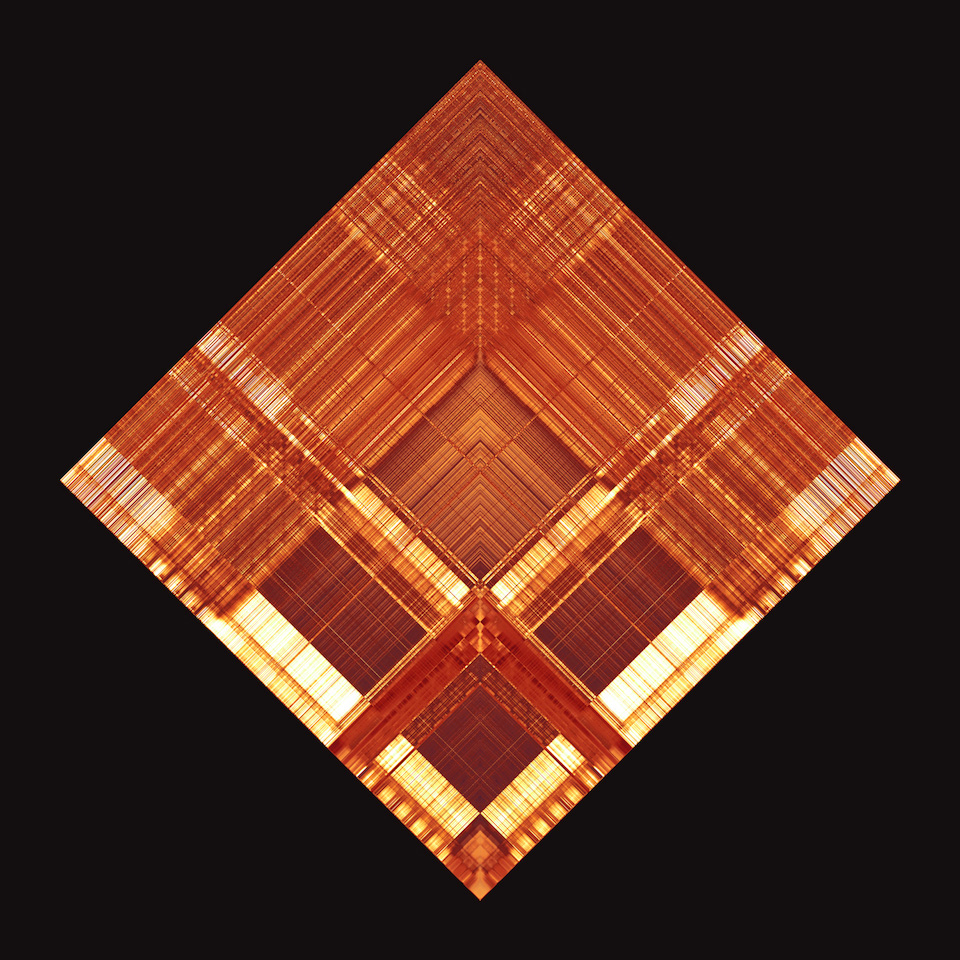
“Cracks in the Firmament” is a reboot of a track I started a couple of years ago but never got anywhere with. I was drawn back to it by listening to people like Fis who make that super minimal-but-maximal stripped down drum & bass. I wanted to try that approach and “Cracks” was the result. It’s very percussion-focused and I used it as a testing ground for trying out some percussive ideas that I had. It’s also the fastest thing I’ve written in a while; I’d totally forgotten how fun it is to make stuff at this tempo.
Rhythmically speaking, I tried to make the track fast, slow, awkward and ordered all at the same time. The fast/slow mix I attempted by putting emphasis on the 1 and 3 beats and on the first beat of every other bar, so that under all the super fast hits there lies an almost painfully slow beat. I tried to get the awkward/ordered mix by blending super clean, quantized hits with messy samples like the rattling metal, and by having short little bits of near silence and radical emphasis changes. One thing I like doing with percussion is seeing how little a change I can make in the pattern to give the biggest perceptual shift, inspired by a course I did couple of years ago on music perception and cognition. An example of this happens at 4:48, when the little glitch happens. At this point the feeling of the whole beat changes, but actually it’s almost exactly the same but shifted a half-beat. The sensation is emphasized by the discontinuity that the glitch introduces, and by the tonal snare that’s introduced in a place that you would expect.
The melody was written on my mum’s piano in Wales. Whenever I’m home I try to write something. I tried to a get piano here in Barcelona but the cost of moving it was ten times its value. This city just isn’t really made for them. Too many tall buildings and narrow stairwells, not to mention the paper-thin walls. So it’s actually a piano synth in this track. Not something I’m super happy about even though it’s fairly close. It sounded fake, so I ended up overlaying another synth to try to get it out of the uncanny valley. I guess I’ll have to rent a real one next time.
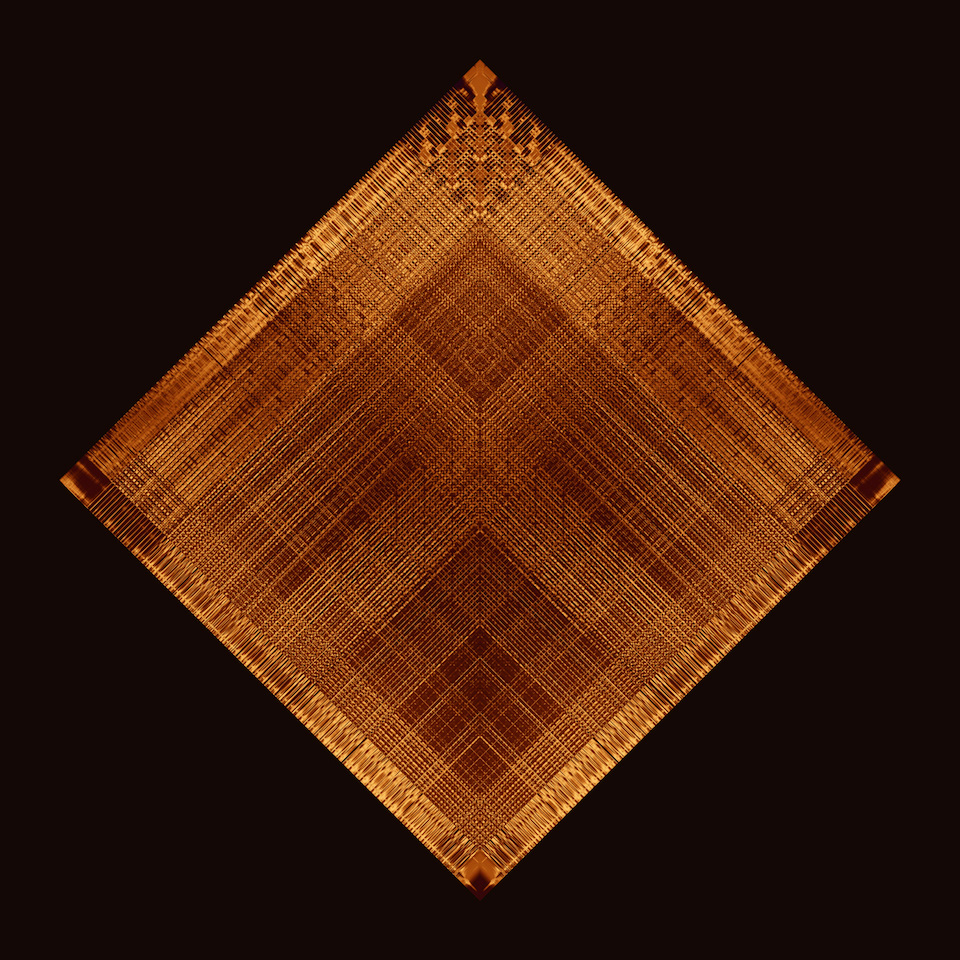
“Thin Shell, Inner Void” is a mix of a few sound design, melody and percussion experiments. The base track is actually something wrote a few years ago and it wasn’t until last year that I rediscovered it and completely changed it. I think the initial version might still be on my SoundCloud somewhere, if I didn’t take it off to save space when I couldn’t afford to pay the fee one year.
The melody was written with a specific constraint: every time it repeated it had to be transposed down, but in a way that sounded smooth enough that you might not immediately notice. Every single time ended up being way too much—it turned into mud after 30 seconds—so in the final version it does it every four or so. I actually made a version that is like a shepard tone so that as it’s transposing down, the octave above fades in giving the perception of a constant lowing. I couldn’t figure out how to fit it in though. Maybe I’ll put it on my SoundCloud or something.
“So much can be done with just volume!”
The sound design was fun in this track. The melody in the breakdown is almost entirely made of pitched ride cymbals, which gives it this super ethereal vibe. I was really pleased with collection of sounds in that part. It sounds like huge factory made of wood and crystals.
The bass sound that comes in was made in a similar way to the sweeps at the start of “Smallest Space,” with ultra resonant bandpass filter sweeps. The source sound is actually just white noise. Then I put that through a bunch of distortions, compressions and spectral effects to end up with that noise. The process made for an interesting composition experience since I couldn’t hit exact notes, and the resonances exploded unpredictably sometimes (as you can hear at 4:20 and 4:40). These unplanned little notes became the inspiration for the bleepy melody that comes in towards the end. I was initially just trying to emphasize the little notes that popped out of the filter sweeps, and ended up developing it into a full melody. Writing tracks is a very recursive process for me, especially when I use more stochastic techniques. It’s what humans are great at: seeing patterns in chaos. I like to see those patterns and try to build on them.

The end of “Thin Shell, Inner Void” was intentionally super digital and mono so that the richness and spatial depth of the binaural recording at the start of “The Galaxy Collapsed Into a Point” was more pronounced. I think it makes quite a satisfying contrast. The recording is of one super windy night when I was living in Bristol. I love the hiss of rustling leaves and so I went to the park in the dead of night to record it. Binaural recordings like this show how far digital synthesis has to come before approaching the richness of natural sounds. At a first listen it just sounds like a soft flavor of noise, but the more you listen the more details pop out. In fact, someone actually walked past me in the park during the recording, and the footsteps are just audible. They must have shat themselves; I was standing there dead still in the darkness at one in the morning.
The working title of this track was “Tube” because the resonant bass hit that defines the first section of the track is based on a recording of a huge, weird, metal tube-shaped sculpture near the port in Genova, Italy. When I got there to record it there was a swarm of kids playing inside. Initially I wanted them to either shut up or fuck off, but actually as I started to record they saw me with recording gear hitting it in various places, and got interested. I ended up I asked them to run about and stamp their feet while I recorded, and got some nice sounds. I had to edit out a lot of screams though. I love resonant sounds like that one. So tonally rich that it seems that in them you can hear any chord you want to. Dischordant and tuned at the same time. I added a static flanger with a high feedback on top to enhance that property.
The second section, when it breaks down into the growing chords was formed from an experiment in dynamics and energy. Some years ago in Cardiff I went to see a Taiko drumming performance. One of the pieces they performed really blew me away. It started with a couple of minutes of silence, with a row of seven drummers with small drums sat facing the audience. After a couple of minutes, you noticed that their arms were moving; they were actually playing the drums in consistent 16th notes, but ultra quietly. Then suddenly, over the space of 10 seconds or so, they went from barely audible up to drumming at full power, and the sound completely filled the auditorium. It was so intense after the minutes of near silence. The dynamic range was absolutely insane. So much can be done with just volume! So the growing pads was trying to get that feeling somewhat—a super intense build that keeps getting louder and louder, until it’s almost unbearable. Listening to it now I think I should have let it go further; it kind of stops a bit short. And doesn’t start quiet enough. Maybe I’ll have another attempt at some point.
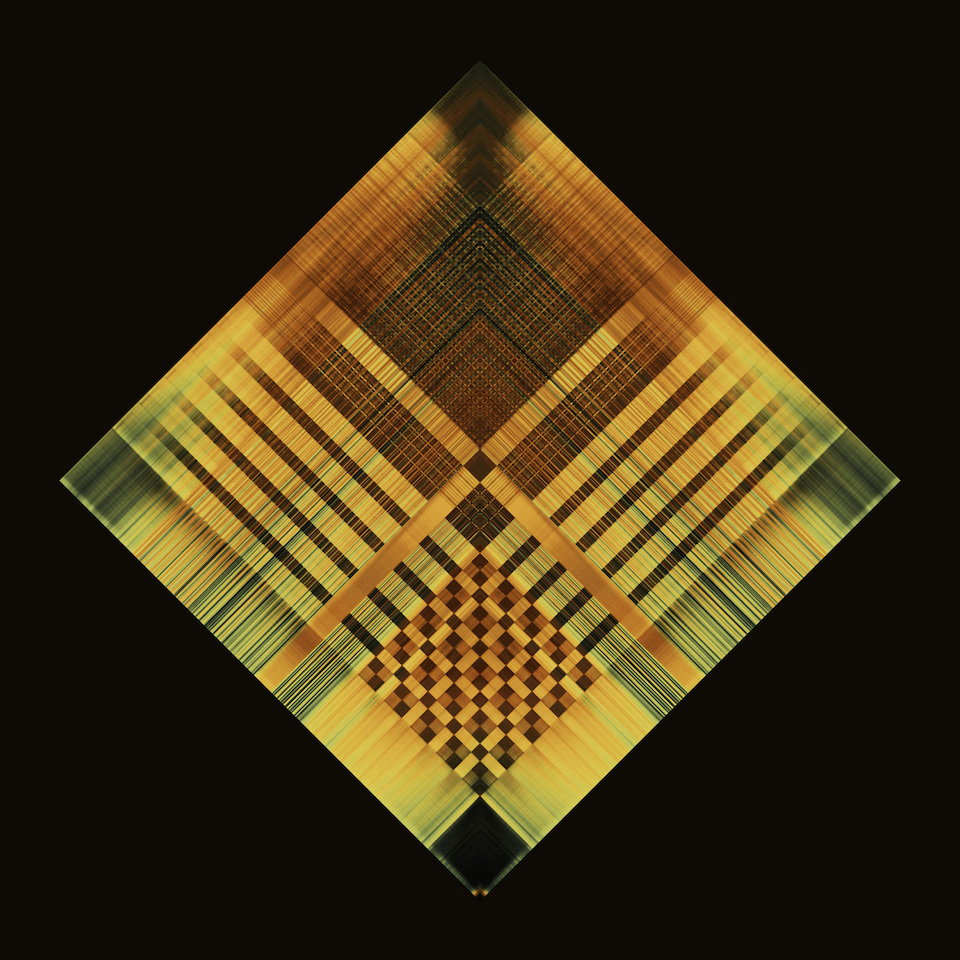
The idea for the artwork came from a course on music analysis that took some years ago. In this course we were studying self-similarity as a way of unveiling the structures in music, using self-similarity matrices. To make one of these matrices, you split the track up into little chunks and compare the frequency content of each chunk to every other chunk. Obviously in this course they were purely practical, but I immediately noticed how beautiful they could be as well. The artwork for the EP is a stylized self-similarity matrix of the whole EP.
Once you know how to read them, they can tell you things about the music too. For example, following the central line from top to bottom, if you encounter a block of a similar texture, that represents a section in the track that sounds similar. Also, a vertical line in the image represents a part in the track where each chunk sounds similar to the last.
The music video I’m working on is basically an exploration of planet sized self-similarity matrix, where the the similarity instead of being a color, is a height. So the terrain is a direct mapping to the structures revealed via the self-similarity. Using a progressive level-of-detail loading mechanism, the resolution of the SSM can be about a million by a million pixels. That’s a terapixel image. The zoom is insane. Thus the title: Hidden Structures. There are whole worlds hidden inside sounds; you just need to know how to extract them.
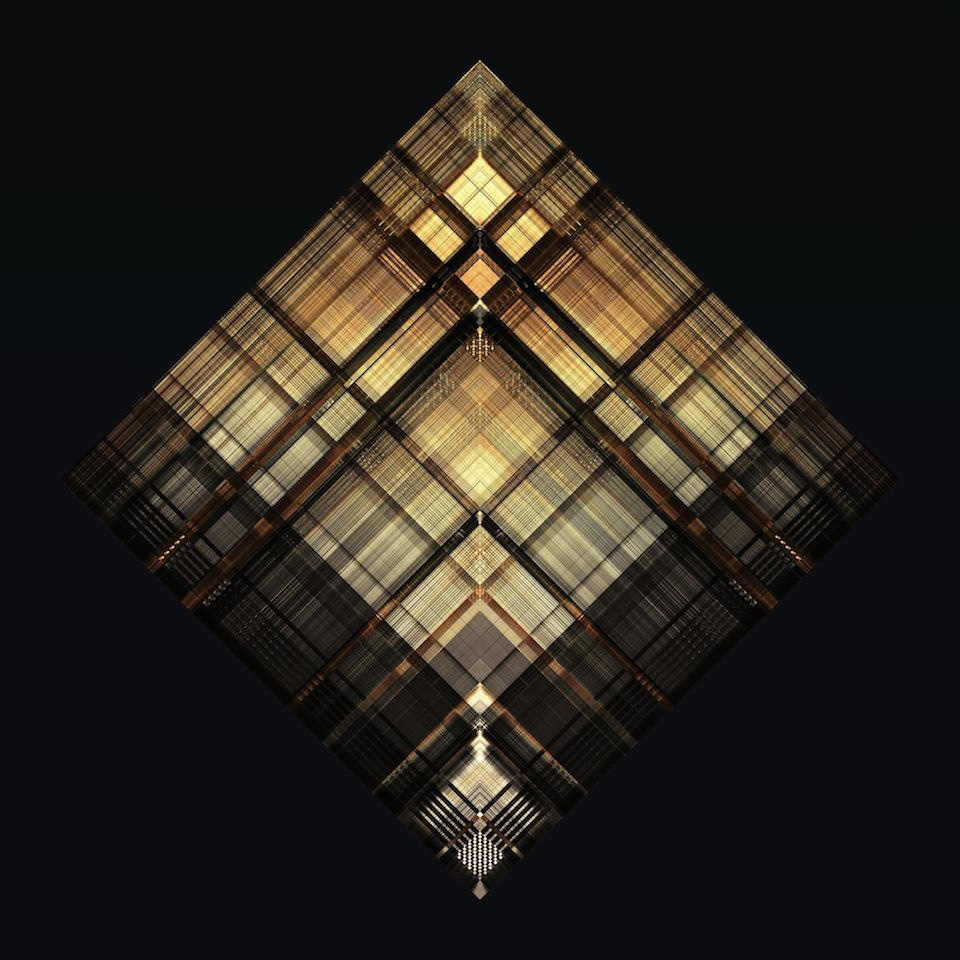
ARTWORK FOR PREVIOUS RELEASES
Since getting into generative art via the Processing language some years ago, I’ve done most of the artwork for my releases.
For my first release in 2011 on King Deluxe (Mass, made under Clouth’s Vaetxh alias) I made a generative system so that each download of the EP came with a completely unique version of the artwork. The code simulated little creatures that ran around the screen trying to avoid each other, leaving trails as they went.
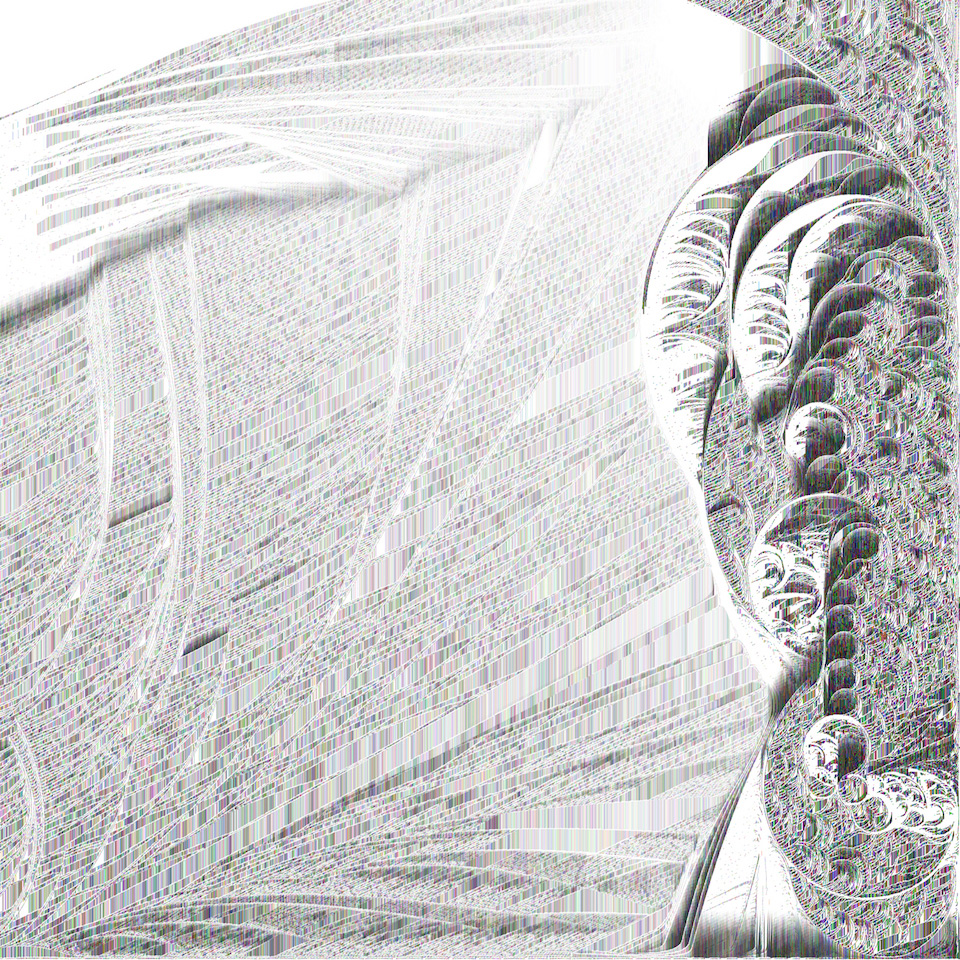
The artwork for Clockwork Atom was made with another generative system that instead processed images, producing these intense glitched-up collages:
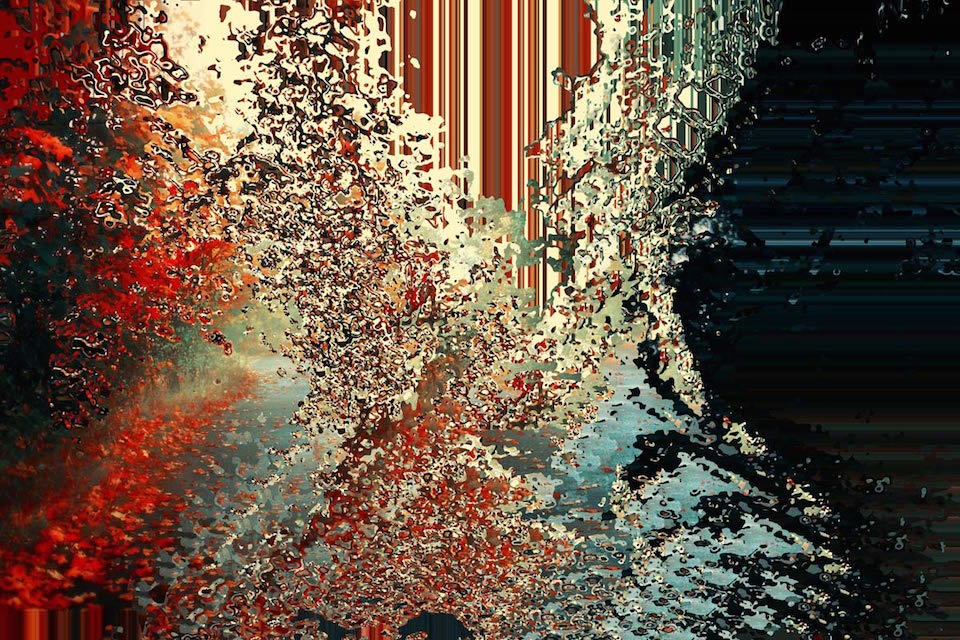
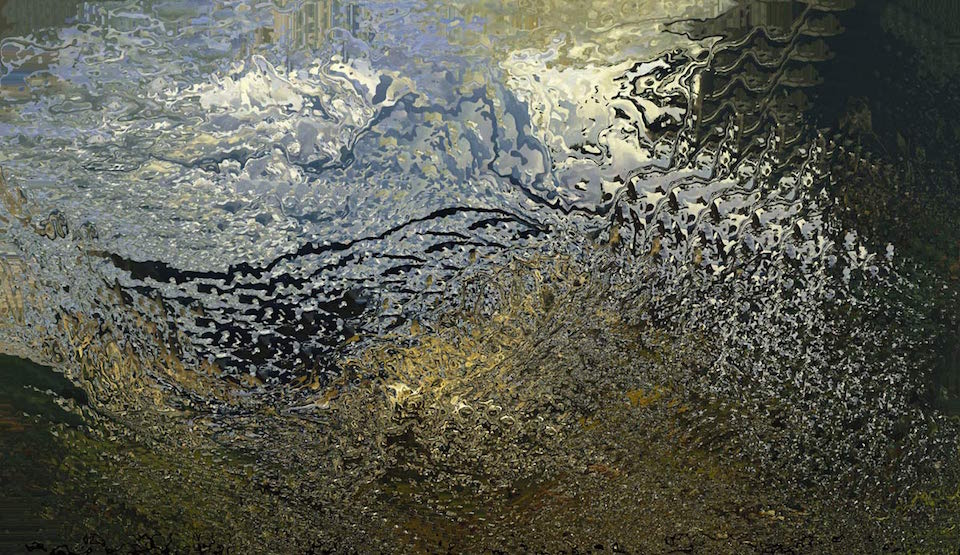
I used the same technique for the Deep Field artwork:
